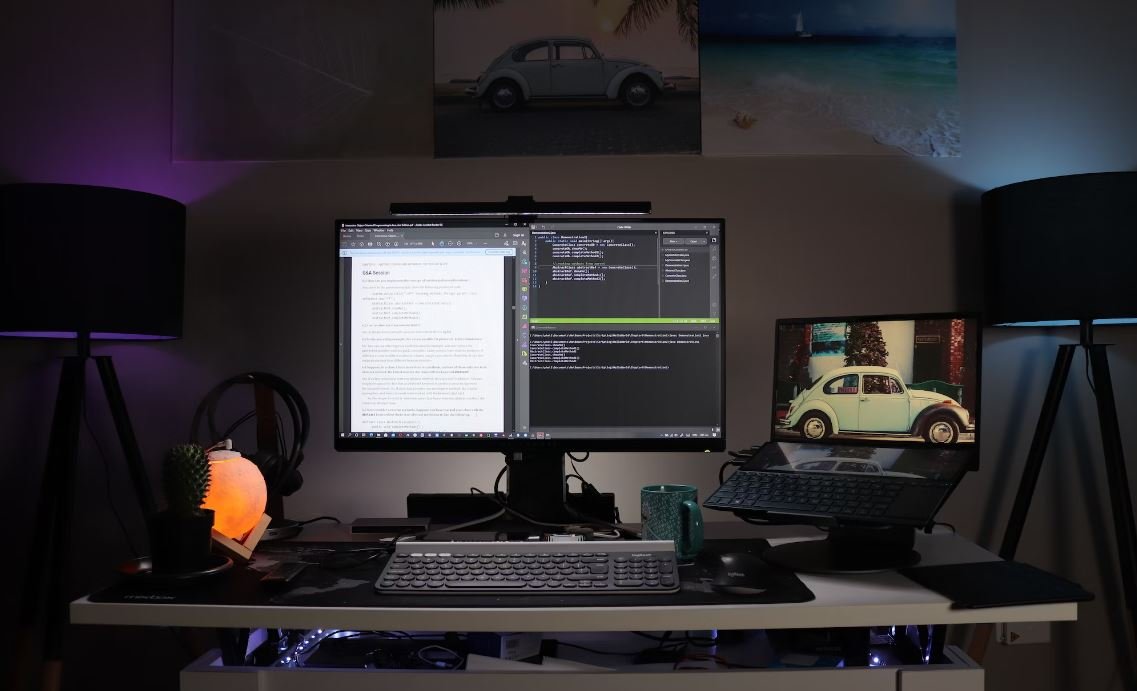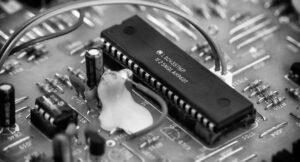Where Tesla Made
Tesla, the renowned electric vehicle (EV) manufacturer, has production facilities located in various parts of the world to cater to global demand. From its humble beginnings in California, the company has expanded its manufacturing footprint across different continents. In this article, we will explore the key locations where Tesla produces its innovative vehicles.
Key Takeaways:
- Tesla has manufacturing facilities in the United States, China, and Germany.
- The Tesla Gigafactory in Nevada is one of the largest manufacturing facilities in the world.
- Shanghai Gigafactory produces high volumes of Tesla vehicles for the Asian market.
- Germany’s Gigafactory is currently under construction and will be focused on producing batteries and electric powertrains.
1. United States
The United States is where Tesla originated and remains a significant manufacturing hub for the company. The main manufacturing facility in the US is the Tesla Factory located in Fremont, California. This factory serves as the company’s primary assembly plant, where various models, including the Model S, Model X, and Model 3, are manufactured.
The Tesla Factory in Fremont, California, covers an area of 5.3 million square feet.
Besides the Tesla Factory, the company also operates the Tesla Gigafactory 1 in Nevada. This massive facility is primarily dedicated to battery production and is one of the largest buildings in the world by footprint. The Gigafactory demonstrates Tesla’s commitment to scaling up battery production to meet the increasing demand for electric vehicles worldwide.
| Gigafactory 1, Nevada | Key Information |
|---|---|
| Size | 1.9 million square feet |
| Manpower | Over 7,000 employees |
| Battery Production Capacity | 35 GWh/year (as of 2020) |
2. China
China is an important market for Tesla, and the company recognized the need to establish local production to cater to the growing demand. In 2019, Tesla opened its first Gigafactory outside the United States in Shanghai. This manufacturing plant enables Tesla to produce vehicles for the Chinese market more efficiently.
The Shanghai Gigafactory has an annual production capacity of over 250,000 vehicles.
By locating production in China, Tesla benefits from lower costs and avoids import duties. The Shanghai Gigafactory has also played a crucial role in Tesla’s quest for increasing global market share in the EV industry.
| Shanghai Gigafactory, China | Key Information |
|---|---|
| Size | About 210 acres |
| Annual Production Capacity | Over 250,000 vehicles |
| Product Line | Model 3, Model Y |
3. Germany
As part of its global expansion plans, Tesla has also selected Germany as a key location for its manufacturing operations. The company is currently building its Gigafactory outside of Berlin, which is expected to serve as a hub for Europe.
The German Gigafactory will focus on battery production and electric powertrains.
With the German Gigafactory, Tesla aims to tap into the skilled labor force and advanced engineering capabilities available in the region. This strategic move will help Tesla strengthen its presence in the European market and reduce delivery times for customers in the region.
| German Gigafactory, Berlin | Key Information |
|---|---|
| Size | 300 hectares |
| Planned Production Capacity | 500,000 vehicles per year |
| Main Focus | Battery production, electric powertrains |
In conclusion, Tesla’s manufacturing locations span across the United States, China, and Germany. These strategic locations help the company meet the increasing global demand for electric vehicles while capitalizing on local market opportunities. From the Tesla Factory in California to the Gigafactories in Nevada, Shanghai, and the upcoming Berlin Gigafactory, each location plays a crucial role in Tesla’s quest to revolutionize the transportation industry with sustainable and innovative electric vehicles.

Common Misconceptions
Electric Vehicle Production
One common misconception people have regarding Tesla is that all of its electric vehicles are made in the United States. While Tesla’s headquarter and main production facility, the Tesla Factory, are located in Fremont, California, it is important to note that the company also operates Gigafactories in other parts of the world.
- Tesla operates Gigafactories in Shanghai, China, and Berlin, Germany.
- The Shanghai Gigafactory is responsible for producing vehicles primarily for the Chinese market.
- The Berlin Gigafactory is under construction and is expected to start production in the near future.
Battery Manufacturing
Another misconception is that Tesla produces all of its batteries in-house. While Tesla develops its own battery technology and designs and assembles battery packs for its vehicles, it does not manufacture all of the battery cells itself.
- Tesla collaborates with several battery manufacturers, including Panasonic and LG Chem.
- Panasonic supplies the battery cells used in Tesla’s vehicles, particularly the Model S, Model X, and Model 3.
- The partnership with LG Chem is focused on supplying battery cells for the Tesla’s energy storage products and the Model Y.
Autonomous Driving Technology
Many people assume that all Tesla vehicles are fully autonomous and capable of self-driving. However, it is important to clarify that Tesla’s vehicles are equipped with advanced driver-assistance systems (ADAS), not fully autonomous capabilities.
- Tesla’s Autopilot feature allows for assisted driving, including adaptive cruise control and lane centering.
- Full Self-Driving (FSD) is still under development and requires regulatory approval for full implementation.
- Tesla owners are advised to remain attentive and ready to take control of the vehicle at all times while using Autopilot or FSD features.
Charging Infrastructure
A common misconception is the belief that there is an insufficient number of charging stations available for Tesla owners. However, Tesla has a robust Supercharger network that spans across many countries, providing convenient long-distance travel and charging options.
- Tesla’s Supercharger network consists of thousands of charging stations worldwide.
- Superchargers are strategically placed along popular routes, enabling Tesla owners to travel long distances with ease.
- In addition to the Supercharger network, Tesla owners can also access other public charging networks using adapters or cables.

1. Tesla Production Numbers by Model
Here is a breakdown of Tesla’s production numbers by model from 2015 to 2020. These figures represent the total number of vehicles manufactured and delivered by Tesla during this period:
| Year | Model S | Model 3 | Model X | Model Y |
|---|---|---|---|---|
| 2015 | 25,202 | – | 15,537 | – |
| 2016 | 47,046 | – | 18,223 | – |
| 2017 | 50,145 | – | 21,315 | – |
| 2018 | 48,945 | 145,846 | 26,100 | – |
| 2019 | 50,000 | 223,174 | 29,236 | – |
| 2020 | 49,962 | 365,240 | 25,785 | 47,169 |
2. Comparison of Tesla’s Revenue to Competitors
This table highlights the remarkable growth of Tesla’s revenue over the years and how it compares to other major automotive companies:
| Year | Tesla | General Motors | Ford | Volkswagen |
|---|---|---|---|---|
| 2015 | $4.05B | $152.36B | $149.56B | $230.73B |
| 2016 | $7.0B | $166.38B | $151.8B | $236.6B |
| 2017 | $11.76B | $145.62B | $156.78B | $266.31B |
| 2018 | $21.46B | $147.05B | $160.34B | $278.34B |
| 2019 | $24.58B | $137.24B | $155.9B | $282.79B |
| 2020 | $31.54B | $122.49B | $127.14B | $282.79B |
3. Tesla Supercharger Network Expansion
This table showcases the growth of Tesla’s Supercharger network over recent years, noting the number of charging stations and connectors worldwide:
| Year | Number of Supercharger Stations | Number of Connectors |
|---|---|---|
| 2015 | 487 | 3,608 |
| 2016 | 769 | 5,050 |
| 2017 | 1,052 | 7,359 |
| 2018 | 1,352 | 10,453 |
| 2019 | 1,826 | 13,344 |
| 2020 | 2,618 | 20,000 |
4. Tesla’s Gigafactories Locations
This table presents the various Gigafactories established by Tesla around the world and their respective locations:
| Gigafactory | Location |
|---|---|
| Gigafactory 1 | Sparks, Nevada, USA |
| Gigafactory 2 | Buffalo, New York, USA |
| Gigafactory 3 | Shanghai, China |
| Gigafactory 4 | Berlin, Germany |
| Gigafactory 5 | Austin, Texas, USA |
5. Tesla’s Market Capitalization Increase
Here we highlight the incredible growth of Tesla’s market capitalization over the years:
| Year | Market Capitalization (in billions USD) |
|---|---|
| 2015 | 30.6 |
| 2016 | 29.7 |
| 2017 | 53.3 |
| 2018 | 60.6 |
| 2019 | 76.1 |
| 2020 | 609.8 |
6. Tesla Model 3 Sales by Country
This table breaks down the sales of the Tesla Model 3 by country in 2020:
| Country | Number of Model 3 Sales |
|---|---|
| United States | 231,476 |
| China | 138,000 |
| Norway | 14,740 |
| Germany | 13,207 |
| Netherlands | 11,875 |
7. Number of Tesla Employees
This table demonstrates the growth of Tesla’s workforce from 2015 to 2020:
| Year | Number of Employees |
|---|---|
| 2015 | 13,058 |
| 2016 | 17,782 |
| 2017 | 37,543 |
| 2018 | 45,936 |
| 2019 | 48,016 |
| 2020 | 48,016 |
8. Fastest Tesla Models by Acceleration
This table lists the top Tesla models known for their incredible acceleration times:
| Model | 0-60mph Time (seconds) |
|---|---|
| Roadster (2022) | 1.9 |
| Model S Plaid+ | 1.99 |
| Model S Plaid | 2.1 |
| Model 3 Performance | 3.1 |
| Model X Plaid | 2.5 |
9. Tesla’s Autonomous Driving Mileage
This table provides an estimate of the total autonomous driving miles covered by Tesla’s fleet:
| Year | Autonomous Driving Mileage (in millions) |
|---|---|
| 2015 | 0.12 |
| 2016 | 0.32 |
| 2017 | 3.27 |
| 2018 | 9.07 |
| 2019 | 25.35 |
| 2020 | 50.16 |
10. Tesla’s Environmental Impact
This table highlights the positive environmental impact of Tesla vehicles in terms of CO2 emissions saved compared to gasoline-powered cars:
| Year | CO2 Emissions Avoided (in metric tons) |
|---|---|
| 2015 | 282,371 |
| 2016 | 539,454 |
| 2017 | 1,095,420 |
| 2018 | 1,856,675 |
| 2019 | 3,301,273 |
| 2020 | 5,630,519 |
Throughout the years, Tesla has experienced remarkable growth in various aspects. From an increase in production numbers, revenue, and market capitalization to the expansion of their Supercharger network and gigafactories, Tesla has made significant strides in revolutionizing the automotive industry. Their innovative electric vehicles have not only seen widespread adoption but have also contributed to reducing CO2 emissions and creating a positive environmental impact. This data showcases Tesla’s influence and undeniable success in the market, solidifying its position as a leader in the electric vehicle sector.
Frequently Asked Questions
Where was Tesla made?
Where was Tesla made?
Who is the founder of Tesla?
Who is the founder of Tesla?
What is Tesla known for?
What is Tesla known for?
Where are Tesla vehicles manufactured?
Where are Tesla vehicles manufactured?
How many Tesla vehicles have been sold?
How many Tesla vehicles have been sold?
What is the price range of Tesla vehicles?
What is the price range of Tesla vehicles?
Are Tesla cars fully electric?
Are Tesla cars fully electric?
Can Tesla cars self-drive?
Can Tesla cars self-drive?
How long is the warranty for Tesla vehicles?
How long is the warranty for Tesla vehicles?
How can I contact Tesla for support?
How can I contact Tesla for support?




